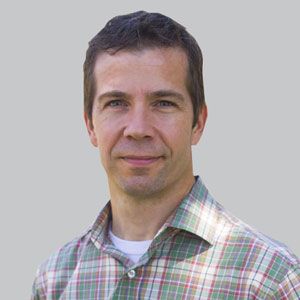Article
Vagus Nerve Stimulation Shows Promise for Stroke Recovery
Author(s):
Vagus nerve stimulation in conjunction with conventional rehabilitation services more than doubled lasting recovery in forelimb supination and simple motor tasks following a stroke.
Michael Kilgard, PhD, BSc, from the University of Texas at Dallas

Michael Kilgard, PhD, BSc
Vagus nerve stimulation (VNS) in conjunction with conventional rehabilitation services more than doubled lasting recovery in forelimb supination and simple motor tasks following a stroke, according to an early study in rats published in the journal Stroke.
In the study, VNS was found to enhance plasticity in corticospinal motor networks, which led to an increase in synaptic connectivity to musculature of the rehabilitated forelimb. The researchers, who were from the University of Texas at Dallas (UTD), noted that although the study was in rats, it provided the first evidence that VNS added to rehabilitative training.
“Our experiment was designed to ask this new question: After a stroke, do you have to rehabilitate every single action?” lead investigator Michael Kilgard, PhD, BSc, said in a statement. “If VNS helps you, is it only helping with the exact motion or function you paired with stimulation? What we found was that it also improves similar motor skills as well and that those results were sustained months beyond the completion of VNS-paired therapy.”
Kilgard noted that a clinical trial in humans is now enrolling nationwide. The trial is aiming to recruit 120 participants at 15 sites and is estimated to be completed by June 2021 (NCT03131960).
“A clinical trial that started here at UTD is now running nationwide, including at UT Southwestern,” Kilgard said. “They are recruiting patients. People in Dallas can enroll now. The ongoing clinical trial is the last step in getting approved as an established therapy. We’re hopefully within a year of having this be standard practice for chronic stroke.”
The rodents included in the trial were exposed to brief bursts of VNS during their motor rehabilitation for 4 weeks. Their durability was then tested for 2 months following the cessation of the VNS therapy.
Those with the VNS were shown to have tripled synaptic connections from the motor cortex to the muscles of the forelimb in question compared to just the rehab. The benefits were shown to persist months after the halting of VNS.
“We have long hypothesized that VNS is making new connections in the brain, but nothing was known for sure,” Seth Hays, PhD, an assistant professor of bioengineering said in a statement. “This is the first evidence that we are driving changes in the brain in animals after brain injury. It’s a big step forward in understanding how the therapy works—this reorganization that we predicted would underlie the benefits of VNS.”
Somewhat unexpectedly, the rats also showed improvement in an untrained task emphasizing volitional forelimb strength—implying a gain in generalized forelimb recovery. The findings reveal that the medical community is one step closer to creating guidelines for the standardized use of VNS post-stroke.
In addition to the enrolling study, the University of Texas at Dallas team is also working on an app to be used on a tablet, for at-home rehabilitation.
“We’ve designed a tablet app outlining hand and arm tasks for patients to interact with, delivering VNS as needed,” postdoctoral researcher Eric Meyers PhD, commented. “We can very precisely assess their performance and monitor recovery remotely. This is all doable at home.”
The development of the application offers long-lasting opportunity for rehabilitation, which is often hard to achieve in the real-world practice setting.
“If you have a stroke, you may have a limited time with a therapist,” Hays said. “So when we create guidelines for a therapist, we now know to advise doing one complex activity as many times as possible, as opposed to a variety of activities. That was an important finding — it was exciting that not only do we improve the task that we trained on, but also relatively similar tasks. You are getting generalization to related things, and you’re getting sustained improvement months down the line.”





